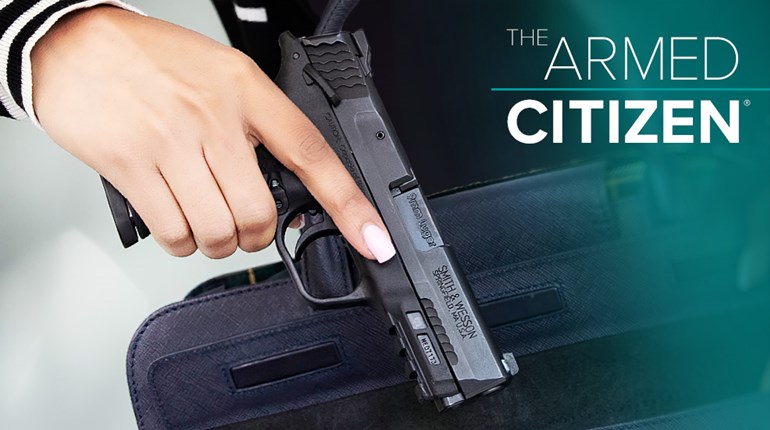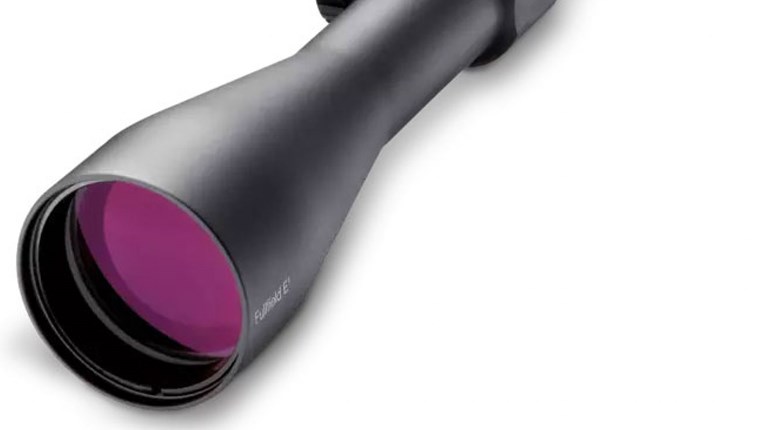
I’ve taken a lot of training courses over the years, but some of the most valuable have been courses that involve simulations and shoot-houses. All of the range time in the world is great, but it can’t truly prepare you for reacting to an emergency where you’re experiencing an adrenaline dump and tunnel vision. You might think you know how you’ll behave when threatened, but I’m here to tell you—there’s a really good chance you’re wrong.
I found this out the hard way in an intense training scenario at Gunsite Academy. For the simulation, I was decked out in protective gear and brought into a shooting house. “OK, imagine you’re home alone watching TV in the back of the house,” the instructor told me. “There’s a loaded AR-15 [loaded with Simunition training rounds] in the closet to your left.” There was also a cordless phone on the table in front of me.
So I was sitting there on edge, waiting for something to happen—which is very much not like real life, but hard to avoid in training. There was a banging at the front door of the house and the sound of someone kicking in the door. I jumped up, grabbed the phone and fake-dialed 911, then ran to the closet while speaking to the instructor in the room, who was observing and pretending to be the 9-1-1 operator. When I picked up the gun, the magazine fell out, and I dropped the phone while I fumbled around getting the gun operational. The “operator” continued to ask me questions, but in my panic, I had gone silent. I crouched in the corner of the closet waiting for the worst.
I was hiding in the closet scared half to death when a teenager playing the role of home invader peeked his head around the door, just a foot or two away from me. Panicked, I fired the training gun in the air and he ran away.
The first few times you do these types of scenarios, you’ll be completely shocked at how very real it feels and how much your heart starts pounding. I don’t know if that ever gets much better; it hasn’t for me yet. My reaction was, in a word, embarrassing. I had not expected to so thoroughly lose control of my emotions and shut down. In the post-scenario analysis, the instructor asked a simple question: “Why didn’t you say anything to the intruders?” It turns out, every other student taking the class had yelled something along the lines of “Get out of my house!” or “I’m armed and calling 9-1-1!” or even just “Who’s there?” And the home invaders had run out without even getting to the back room. I was the only one who fired a shot.
It was a huge lesson for me that I’ll never forget: Your voice is your first line of defense in a self-defense scenario. The bigger and scarier your command voice is, the better, but you don’t have to sound like Rambo to be effective.
Using your voice when situations are just starting to develop can prevent them from going sideways. A simple, “That’s close enough,” in a loud, serious tone will let anyone approaching you know that you’re aware of them and paying attention to what they’re doing. A guy with innocent intent should stop there and make his intentions known. Using your voice this way also serves the vital and often overlooked role of helping you acknowledge danger. It’s always going to take your brain some time to register that a bad situation is unfolding, and your natural inclination is to try to explain it away. Hearing yourself say, “That’s close enough,” can help snap you out of denial mode and into this-could-be-something-to-worry-about mode.
Time permitting, a guy who keeps approaching you after you’ve told him not to warrants a louder, “I said that’s close enough!” or “Stop!” perhaps accompanied by you putting your hand on your gun or stepping into a solid defensive stance (depending on the scenario). This draws attention from bystanders and lets a bad guy know that you’re going to be a pain in the butt to deal with. He might very well choose to move on and leave you alone, which is a huge win for you. At the very least, anyone who does not react immediately and appropriately to those words is giving you a crystal-clear signal that they’re up to no good and it’s go-time.
It’s important to note that the time to use your voice this way is before a suspicious person gets close to you. This means you’ll need to pay attention to your surroundings and stay aware of who is moving in and out of your space. How close is too close? How close do normal people typically get to strangers in a parking lot? How close do they stand to people in an elevator? Anything that feels too close for the situation is too close. If someone’s approaching you and giving no indication that they’re going to stop at normal conversational distance, speak up. If someone is giving off a shady vibe, you’ll mentally extend that distance out a little bit.
If you’re in the midst of a dangerous scenario, like I was in the simulated home invasion, using your voice is useful for a couple of different purposes. First, it draws attention, and most criminals are not interested in having an audience. Second, it can give the criminal information that can change his mind. If he’s a burglar hoping to grab some cash off the nightstand and maybe steal a TV, he probably doesn’t want to deal with bumping into a homeowner. Even if he’s armed and doesn’t mind using violence against a victim, if he gets a warning that you’re armed before he gets to you, he might give up and move on.
Use your intuition and some common sense here. If you’re facing a mugger who’s pointing a gun at you, screaming at him, cussing him out, warning him you have a gun, or saying something really dumb like, “No,” or “What are you going to do, shoot me?” is a bad idea. It’s too late. The only thing to do with your voice at that point is mumble “OK” as you hand over your wallet or throw your purse and start running. On the other hand, if a shady character is attempting to physically grab you and shove you into an alley or a van, screaming your head off might be your best and only option. It’s all situation-dependent.
It might come as a surprise to you—it certainly did to me—but using your voice this way needs to be practiced. Fear completely caused me to shut down vocally in the simulation shoot house. You don’t know if you’ll react the same way, but you can help train yourself by using your voice in practice. Screaming “STOP!” before every shot you take at the range might not be appreciated by the range officer and the shooters around you, but you can practice this at home when you’re dry firing. Double-check that your gun is unloaded and practice shouting “STOP!” in as loud, deep and serious a voice as you can while you start to draw the gun. Doing this in a real-life scenario isn’t a bad idea anyway—screaming at an attacker to stop as a last-ditch measure before you shoot certainly won’t hurt anything and might just help you avoid having to pull the trigger (or help you defend yourself in court later if witnesses heard you).
You carry a firearm for self-defense, but a gunfight is never good. If you can stop a situation from going to the gun by using your voice, you win. The trick is to work on this in practice and make it a part of a well-rounded personal safety strategy that includes mindset and awareness, using your voice, and a defensive tool for when all else fails. Speaking up can literally save your life.














































